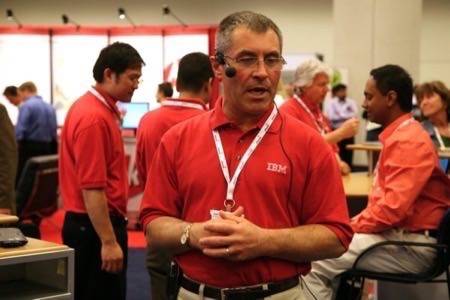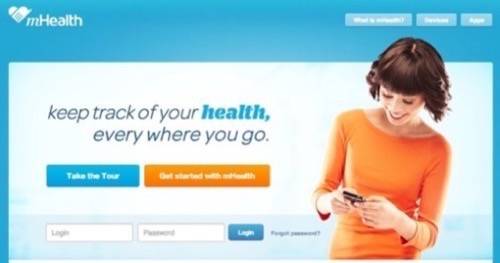
I’m at the Health 2.0 Conference in San Francisco – and it reminds me a lot of the Web 2.0 Conferences of 2006-07. The second coming of the Web, coined “Web 2.0” by Tim O’Reilly and his company, was entering its peak around 2006. If I ever doubted that Web 2.0 was big business, I certainly didn’t after I spotted IBM teaching it at the 2007 Web 2.0 Expo. What’s more, the IBMers weren’t sporting their traditional blue shirts. Instead they wore red polo shirts – talk about a paradigm shift!
Health 2.0 feels like it’s at the same stage in 2012. The big companies are present at this event, all of them selling “platforms” for digital health. In a single panel today, four BigCos presented their versions of such a platform: AT&T, Microsoft, Qualcomm and Aetna. I sat down with AT&T’s Chief Medical Officer after the panel, to see what it has to offer.
The panel I’m referring to was cheekily entitled ‘Platforms for Unplatforms’ and it was moderated by Matthew Holt, who co-founded the Health 2.0 conference with Indu Subaiya in 2007. The panel description made it clear that these BigCo platforms are a new phenomenon:
“For years at Health 2.0 we’ve been describing the mix of applications and devices working together as “unplatforms”. In the past few months several major health care technology organizations have announced the launch of platforms and are trying to attract developers and health care technology companies to use them.”
The panel itself was an interesting look at the platforms for each company, but to better understand why the BigCos are now entering this space I sat down with AT&T’s Chief Medical Information Officer, Dr. Geeta Nayyar, to talk about its new AT&T mHealth Platform.
As the name suggests, the AT&T mHealth Platform is mobile-focused. It aims to “provide a single environment where consumers can securely aggregate their data from across silos — insurance companies, doctor’s offices, connected devices, applications — and other data sources for better and easier access.” AT&T is partnering with startup health products like Fitbit, myZeo and the Withings WiFi Body Scale. It also plans to create an open platform, meaning that third party developers must make their data available for sharing across applications.
Currently the AT&T mHealth Platform is targeted to enterprises, as an offering for employees.

An early AT&T health product, although not on the mHealth platform, is DiabetesManager. It was developed in partnership with diabetes software company WellDoc. AT&T tested this out on its own employees, in a pilot program for people with Type 2 diabetes. Dr. Nayyar reported back, in a blog post, that “72 percent rated DiabetesManager as a “highly useful” as a tool to help them manage their diabetes.”
OK, the pilot was somewhat biased – an AT&T product tested on AT&T employees. But after meeting Dr. Nayyar today, I was impressed by her passion for health technology. As well as being AT&T’s Chief Medical Information Officer, Dr. Nayyar is an iPad-toting Assistant Clinical Professor of Medicine for the Department of Rheumatology at George Washington University. She definitely walks the talk.

Dr. Nayyar explained that health data is distributed across many “data islands” currently, which is another theme I’m hearing regularly at the Health 2.0 Conference. The reason why AT&T built a platform – indeed the reason why each of the BigCos in the panel I mentioned built a platform – is to aggregate those data islands for users.
It’s a noble goal and one we all want to see achieved, no matter which company – big or small – does it. The scale of technology and expertise of companies like AT&T, Qualcomm, Microsoft and Aetna gives them an advantage. That’s why they’re all building platforms. I do wonder though if AT&T’s approach is too focused on its actual customers: enterprises. I have some doubts about the others too – for example, would you trust all of your health data to an insurance company (Aetna)? I wouldn’t.
One thing is for sure: the digital health platform is a huge opportunity and the market is up for grabs right now. We don’t know which of these, or other, BigCos will end up being the main players. But I for one welcome their entrance to the digital health market.
For Health 2.0 in 2012, just as it was for Web 2.0 in 2006/07, it’s business time.
Top image: IBM at Web 2.0 Expo 2007; photo by Scott Beale / Laughing Squid










